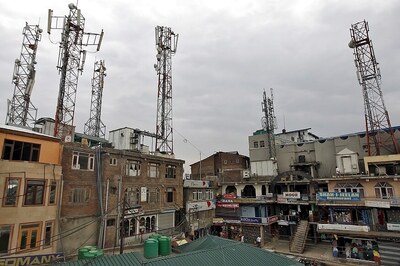
views
In January 2019, the Delhi Health Department raided a Karol Bagh hospital accused of using Preimplantation Genetic Diagnosis (PGD), a form of Assisted Reproductive Technology (ART) that determines the sex of an embryo. The clinic had over 300 workers, charged INR 8.5 lakh for in-vitro fertilisation (IVF), promised the clients a male child, and even offered to take them to Thailand, Singapore, or Dubai for the procedure.
PGD is a selective IVF method examining the genetic characteristics of a pre-embryo before its transfer to the uterus. Publicly available since the 1990s, PGD is employed when a person is at risk of having a child with a genetic illness or to enhance the chances of child-bearing in persons unable to conceive traditionally.
However, many use PGD for gender selection driven by cultural, social, ethnic, or psychological factors. This sparks a moral outcry over not implanting healthy embryos deemed the ‘wrong’ sex. In countries like India, PGD threatens to encourage the preference for sons over daughters. UNPF estimates that each year, India misses nearly 4,00,000 female births because of sex selection, especially in states like Rajasthan, Punjab, Haryana. That is, around 3% of all female births. However, the NFHS-5 data shows states like Kerala, Tamil Nadu, Odisha, Bihar, and Maharashtra also register a worsening ratio.
The latest survey indicates an overall increase in sex ratio from 1,000 to 1,020 in 2005-06 to 991 in 2015-16, due to an increase in female life expectancy. Despite an uptick from the previous study, the sex ratio at birth remains alarmingly low at 929. WHO considers 952 to be the natural sex ratio at birth, indicating the prevalence of sex selection.
In the last three decades, nearly 20,000 ART facilities (mostly unregulated) that offer PGD, have emerged all across India. The cost of PGD is anywhere between 1.5 to 2.5 lakh. In addition to the domestic demand, many overseas clients also seek Indian facilities due to relatively lower costs. Furthermore, rising incomes, especially in upper-class populations in rural areas, and lower costs of the process are accelerating the access to ART. This trend is shifting views about fertility treatments as a whole, sustained by a cycle of good IVF outcomes which then inspires aspiring parents.
The Commission on Status of Women indicates that sex selection is practised by urban, educated, and aspiring middle-class people. With an increase in ART clinics in Tier 2 cities and an increase in rural income data suggesting possible usage of PGD, it’s evident that PGD will not be an exclusively urban phenomenon. Though, accessibility to PGD is restricted to the upper-class demographic but is not solely urban.
Urban child sex ratios are typically worse than rural ones. At the same time, gender-biased sex selection is spreading to rural areas, as technology becomes more accessible. That is to say, unregulated access of PGD, via upsurging ART clinics for sex selection all over the country, is a cause of concern that may disastrously impact the sex ratio.
In speaking with around 30 doctors about the growing concerns of PGD, News Minute found that clinics get approximately 30-40 requests per month. Fortunately, over the last few years, stringent regulations have reduced the number of requests.
However, PGD sex selection is not restricted to India’s borders. Lax regulations make Dubai, Thailand, and Russia attractive sex-selection destinations for affluent Indians. Indians skirt the ban on preconception sex selection by travelling to these countries.
Although the ART industry in India is unregulated, one law, Pre-conception and Pre-natal Diagnostic Techniques Act, bans and penalises preconception sex selection. It began as the Indian Pre-Natal Diagnostic Techniques (Regulation and Prevention of Misuse) Act (PNDT) passed in 1994, prohibiting sex discrimination in any form. However, after its ineffectiveness in curbing sex-selection, the act was revised to be PCPNDT Act. This revision limited the use of prenatal diagnostic methods to medically essential cases.
Despite the act’s amendments, enforcement remains a challenge due to the medical community’s and government authorities’ complicity and the absence of regulation. If the doctor/technician is aware that the parents prefer a boy, sometimes the doctor may just “wink or wince” to announce the gender of the foetus.
2020 saw the introduction of The Assisted Reproductive Technology (Regulation) Bill in Lok Sabha to bring the ART sector under government regulation. This bill is an important step in monitoring the industry because it creates an overseeing and registry body. Clause 26(2) of the bill prohibits sex determination or selection during PGD.
It’s worth noting that there still are several ethical concerns associated with such screenings. The Registration Authority’s ability to accept or reject specified diseases allows for any ailment to be included in the pre-screening, which might be harmful and may lead to easier sex determination. Rules and regulations must specify sex-related ailments and diseases or the Bill risks encouraging an illegal eugenics programme, accidentally promoting sex determination and selection.
Overall, the bill is a step in the right direction and a much-needed intervention. However, legal interventions alone cannot solve the root cause of the problem. For instance, Medical professionals and government officials often sympathise with parents in their demand for a boy and are complicit in these procedures. Regular monitoring and audit of ART clinics records may confront this matter. Moreover, PGDs must be brought under legal regulations, which the new ART Bill aspires to do.
However, the preference for male children is deeply rooted in Indian society. Therefore, re-education and sensitisation regarding male preference are crucial in tackling sex selection and discrimination.
India should emphasise education and gender equality in the legal system. It is easier to use legal procedures to prohibit gender identification or selection technologies than to employ the legislation and re-education initiatives to achieve the more essential and long-term aim of reducing son preference. However, mere legal measures have proven ineffective so far. A combination of legislation sustained public awareness programs, and more opportunities for women in education and employment will have a greater impact on sex-selection practices in India.
Fahad Nahvi is a Research Consultant at SPRF. Headquartered in New Delhi, SPRF is a young policy think tank seeking to make public policy research holistic and accessible.
Read all the Latest Opinion News and Breaking News here



















Comments
0 comment